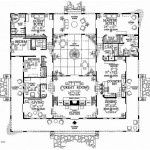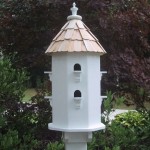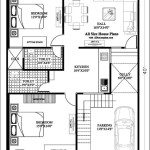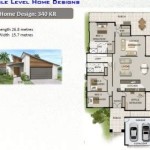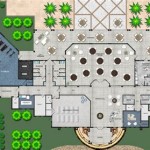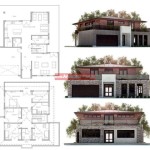Airplane Hangar Homes: Designing and Building Your Dream Residence
Airplane hangar homes offer a unique living experience, combining residential comfort with the convenience of aircraft storage. Whether for passionate pilots or those seeking unconventional architecture, these homes require careful planning and execution. This article explores key considerations for designing and building an airplane hangar home.
Choosing the Right Location
Location is paramount when planning an airpark home. Key factors include:
- Proximity to desired amenities: Consider proximity to schools, hospitals, shopping areas, and employment centers.
- Airspace regulations: Thoroughly research local airspace restrictions and flight paths to ensure compatibility with future flight operations.
- Airport community rules: Airpark communities often have specific regulations regarding hangar size, home design, and aircraft types.
- Land availability and cost: Evaluate the size and cost of available lots within the airpark to ensure they meet project requirements.
- Accessibility: Assess ease of access to major roads and highways for ground transportation.
Hangar Design and Construction
The hangar itself is a crucial element of the project. Important aspects include:
- Size and dimensions: Determine the necessary hangar size based on aircraft wingspan, tail height, and anticipated future needs.
- Door type and size: Choose appropriate hangar doors that provide adequate clearance and ease of operation. Bi-fold, hydraulic, or stacked doors are common options.
- Construction materials: Select durable and cost-effective materials for the hangar structure, such as steel, concrete, or wood.
- Utilities and services: Plan for essential utilities within the hangar, including electricity, water, and potentially compressed air and fuel systems.
Integrating the Living Space
Seamlessly integrating the living space with the hangar requires careful design considerations:
- Layout and floor plan: Design the living space to maximize views of the aircraft and apron while maintaining privacy and functionality.
- Noise mitigation: Incorporate soundproofing measures to minimize noise transfer between the hangar and living areas.
- Fire safety: Install appropriate fire suppression systems and firewalls between the hangar and living quarters for enhanced safety.
- Access and circulation: Design clear and convenient access points between the hangar and living space.
Budgeting and Financing
Developing a realistic budget is crucial for successful project completion. Key financial aspects to consider include:
- Land acquisition costs: Determine the market value of the chosen lot within the airpark.
- Hangar construction costs: Obtain accurate estimates for materials, labor, and permits related to hangar construction.
- Residential construction costs: Calculate the cost of building the living quarters, including materials, labor, and finishes.
- Utility connections and infrastructure: Factor in the cost of connecting to essential utilities and any necessary site preparation.
- Financing options: Explore available financing options specifically designed for airpark home construction.
Regulatory Compliance
Navigating regulatory requirements is essential for a smooth construction process. Key regulations to address include:
- Building permits: Obtain necessary building permits for both the hangar and residential structures.
- Environmental regulations: Comply with local and federal environmental regulations regarding stormwater management and waste disposal.
- Airport authority regulations: Adhere to specific regulations established by the airport or airpark community.
- FAA regulations: Ensure compliance with Federal Aviation Administration (FAA) regulations regarding airspace and aircraft operations.
Working with Professionals
Engaging experienced professionals is critical for a successful outcome.
- Architects: Collaborate with architects specializing in hangar home design to develop functional and aesthetically pleasing plans.
- Engineers: Engage structural engineers to ensure the hangar's structural integrity.
- Contractors: Select experienced contractors with expertise in both hangar and residential construction.
- Aviation consultants: Consider consulting with aviation professionals to address specific needs related to aircraft storage and operations.
Planning for Future Needs
Anticipating future needs is essential for a long-term successful project.
- Aircraft upgrades: Consider potential future aircraft upgrades and ensure the hangar can accommodate larger or different aircraft types.
- Expansion possibilities: Design the living space with potential future expansion in mind, such as adding bedrooms or living areas.
- Technology integration: Incorporate smart home technology and aviation-specific systems for enhanced convenience and safety.
Careful planning and execution are crucial for realizing the dream of an airplane hangar home. By addressing these key considerations, individuals can create a unique and functional living space that integrates their passion for aviation with the comforts of home.

Susitna Hangar Home

Hanger Home Lower Level Might Need More Room For Toys Hangar Homes Airplane House Floor Plans

Susitna Hangar Home

Custom Northwest Home With Airplane Hanger 35475gh Architectural Designs House Plans

Hangar Home Designer Residential Structural Architectural Engineer

Hangars And Homes Sa Flyer

Airport House Energy Efficiency And Garage Space For An Airplane Greenbuildingadvisor

7 Hangar Arch Ideas Airplane Hanger House Homes

Aviation Hangar Wbdg Whole Building Design Guide

Hangar Home Designer Residential Structural Architectural Engineer

